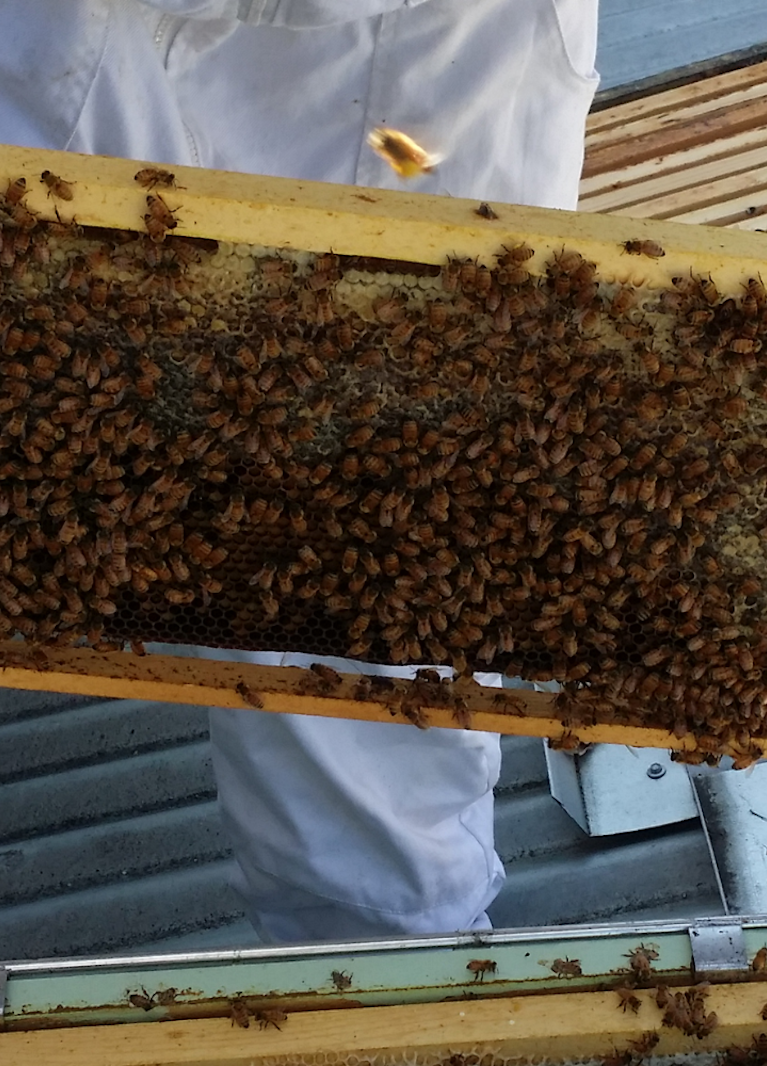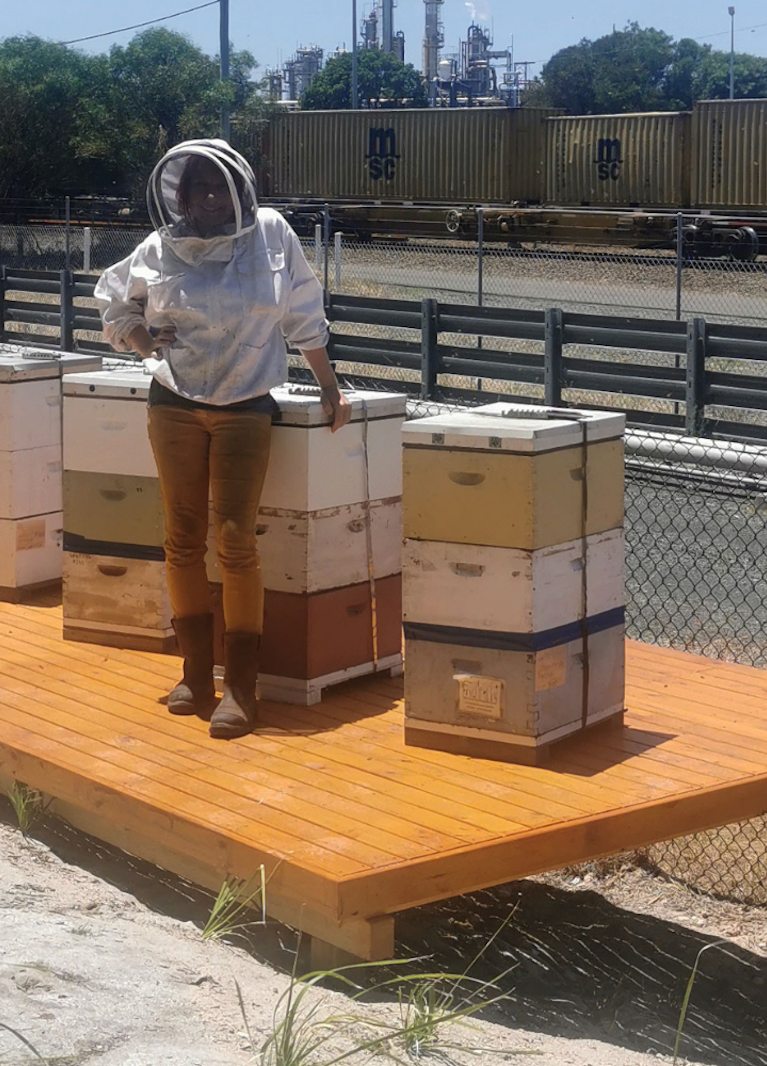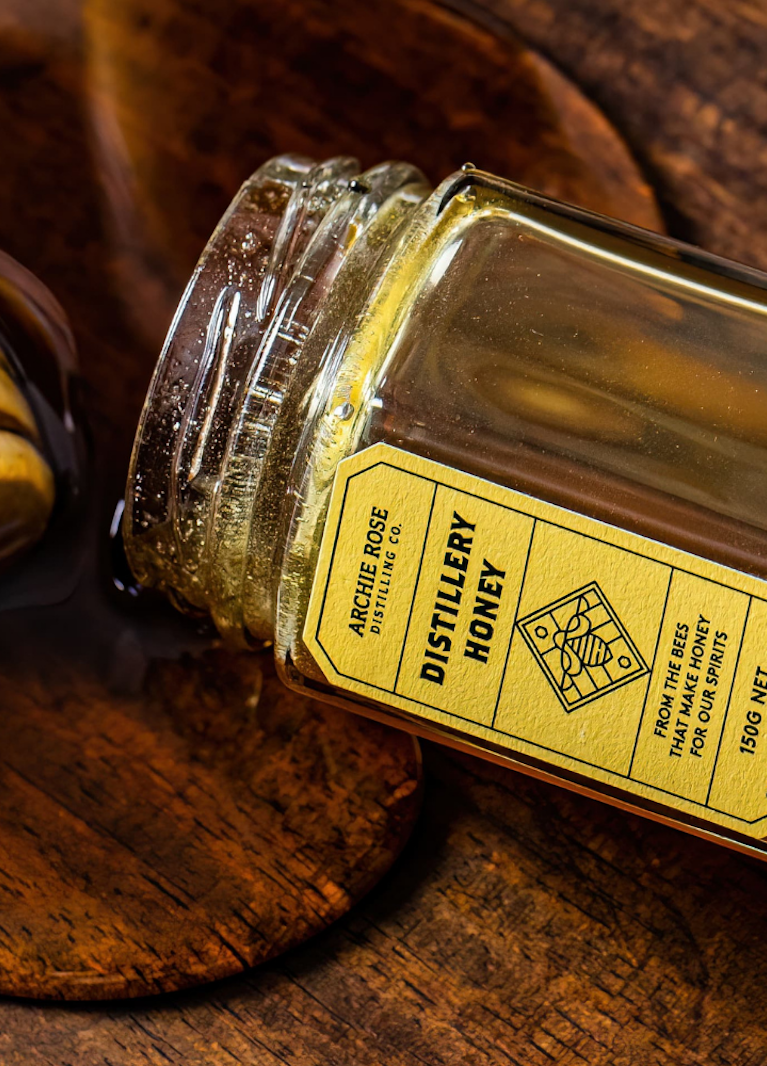Placing A Spotlight On The Busy Bees At Archie Rose

Onsite at our Botany distillery we have eight different hives of hard-working little pollinators of our own, with a population that waxes and wanes between an estimated 160,000 to over 640,000 busy bees, harvesting honey that we use in our spirits.
These European Honey Bees (or Apis Mellifera if you go by their scientific name) have been rescued and rehomed to Archie Rose, and have grown from small swarms to thriving, honey metropolises.
Apiarist and Urban Beehive Co-Director Vicky Brown visits the Archie Rose distillery as often as once a week in spring and every three weeks for the rest of the year, harvesting honey for our Distiller’s Strength Gin and making sure our bees are not just surviving but thriving.
Hear more from Vicky about the Archie Rose bees below:
Tell us more about the Archie Rose bees!
Currently Archie Rose has seven established beehives and one recently rescued swarm that is working its way up to be a beehive in the months to come.
All these beehives are populated by rescue swarms and are named in the providence of where they came from. As such we have named these hives Audrey, Carrington, Autumn, Jock, Starling, Robey, and Tricky after the streets they were found and we even have one called Motorbike as we rescued the swarm from a motorcycle in the Sydney CBD!
Each hive grows to a population of approximately 80,000 at its peak in the spring months.

How long have you been working alongside Archie Rose tending to our busy bees?
When it was just the Rosebery distillery there were big dreams of having a large number of beehives onsite however it just wasn’t viable. However, when the Botany distillery site opened the team at Archie Rose went above and beyond to do everything they could to support a healthy population of bees. All eight of our beehives are living on a special platform built at the rear of the building to ensure they have the space to do as they please.
They do really well here and when it isn’t raining produce a really good amount of honey, the majority of which comes from water gum and ti-tree in the local area.
How do the Archie Rose European Honey Bees differ from other bee species?
There are approximately 20,000 species of bees globally (2,000 of which call Australia home) which all play a vital role in preserving biodiversity and ecosystem health.
The European Honey Bee is where the majority of honey in Australia and around the world is produced, but here in Australia we also have a number of native species which produce honey in small amounts that unlike standard honey requires refrigeration.
Walk us through a visit to the Archie Rose bees?
When I come to visit and check on the bees I’m looking at the honey harvest, seeing how much nectar they are bringing in, that the boxes the beehives are in are waterproof, and most importantly I check for swarming behaviours.
In springtime especially when they are very busy harvesting and their population has exponentially expanded, the bees have a natural instinct to swarm, with half the population leaving to spread their genetic material and start a new colony somewhere else.
Last year was especially tough for the Archie Rose bees as they were so strong and healthy, it was exhausting trying to keep them all together! To prevent this I’ll use a number of swarm prevention techniques such as splitting up hives and moving queens around to keep them in the one place.
However, even if the bees are happy where they are they will forage up to 5-8km away, foraging quite far for an insect so small to find nectar.
After my visit, I’ll then take the honey offsite to the Urban Beehive factory in Matraville and extract and bottle the honey for return to Archie Rose to use.

What is the Archie Rose honey like?
This year because of all the rain Sydney has been having we only got a springtime harvest which was a very dark red honey as a result of lots of ti-tree. I also did a harvest just before Christmas that was smaller but had a different flavour.
I then blended the two harvests together to balance them out, creating a lightly filtered product that has traces of pollen. We don’t microfilter or overheat our honey so I think the final product is a great composition of honey.
What can readers do to support bees in their backyards?
The best thing you can do to support World Bee day and support all your local bees is to plant flowers, trees, or even grasses. Planting anything that produces a flower that produces nectar is a great way to celebrate World Bee Day as it keeps our busy bees healthy.
Read more about World Bee Day here.